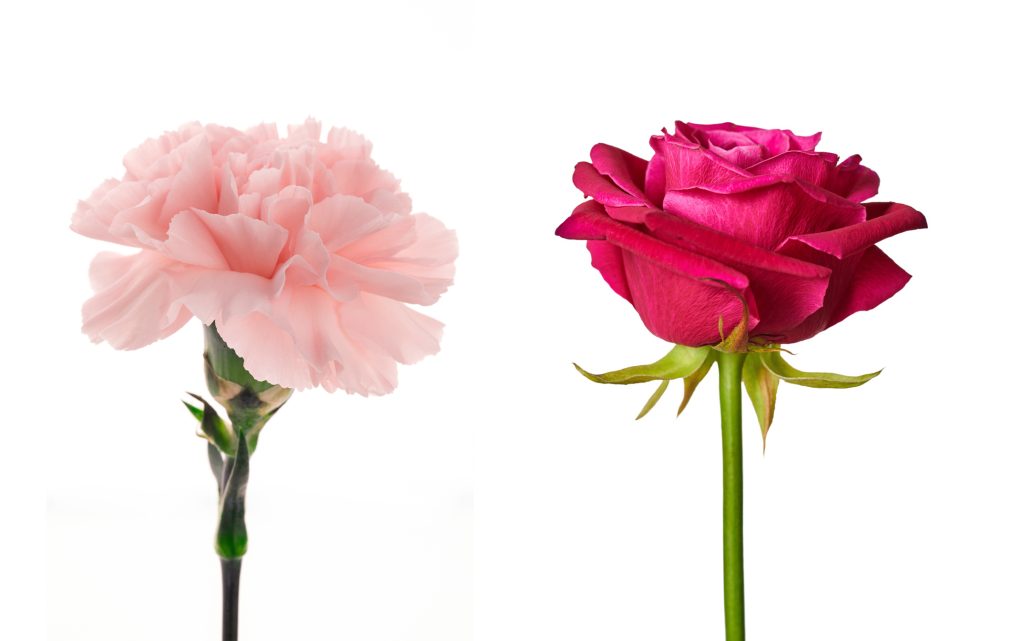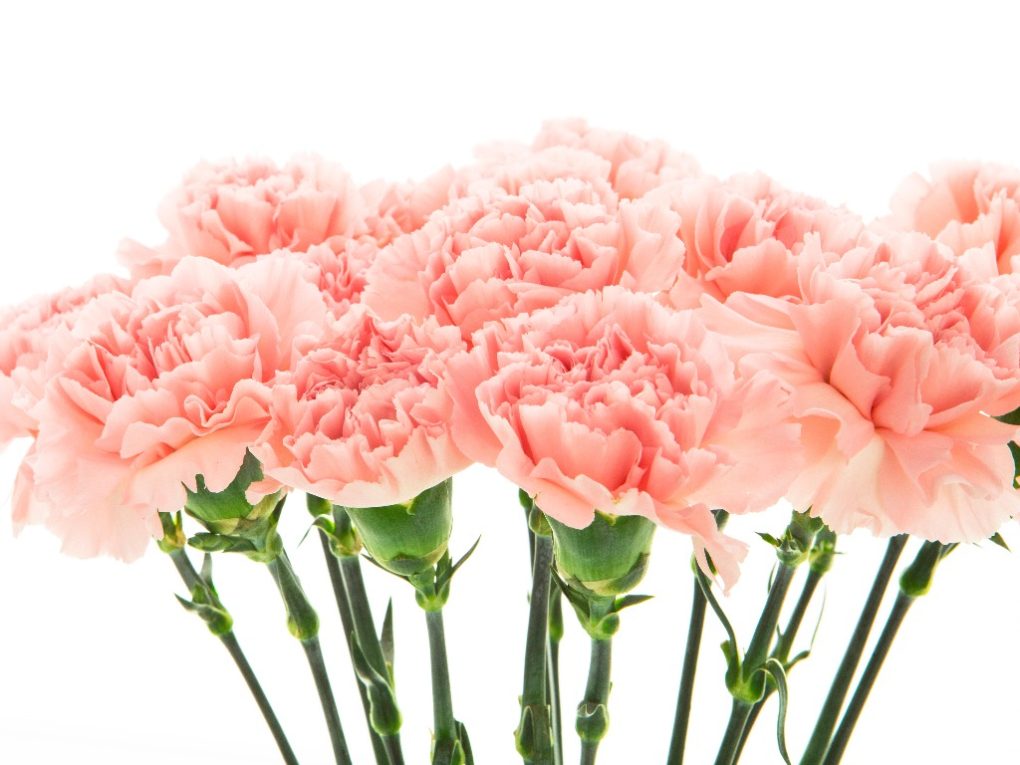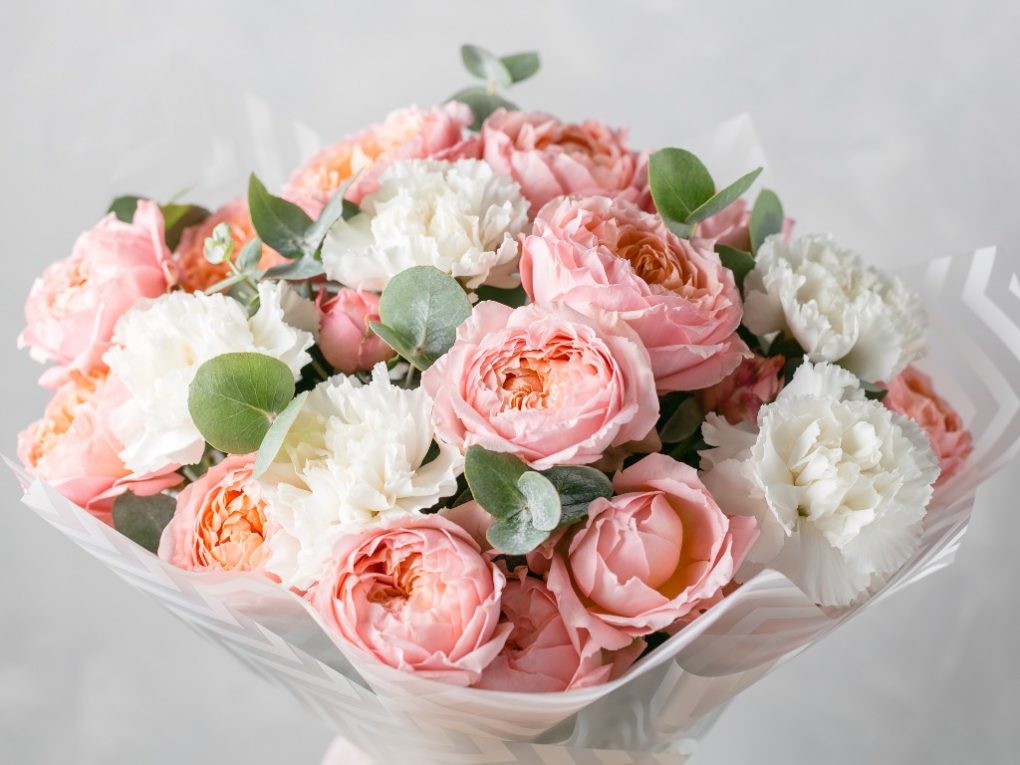Carnation vs. Rose: A Comparison of Characteristics and Symbolic Meanings
Carnations are smaller, more delicate flowers with multiple thin petals that grow in clusters on a single stem. They come in various colors, including pink, red, white, and yellow. Conversely, roses have larger, fuller blooms with thicker petals that grow individually or in small clusters on a stem. They come in various colors, including red, pink, yellow, white, and black.

One of the most significant differences between carnations and roses is their price. Carnations are less expensive than roses, making them a popular choice for those on a budget. Additionally, carnations are known for their long-lasting vase life, meaning they can be enjoyed longer than roses. However, roses are often considered more premium due to their association with love and romance.
Table of Contents
History and Symbolism
Carnations and roses have a rich history and symbolism, making them popular choices for various occasions. The carnation, also known as Dianthus caryophyllus, has been cultivated since ancient Greece, where it was revered as a flower of the gods or a flower of love. The name “carnation” comes from the Latin word for flesh, which is believed to have healing properties for the skin.
Roses have been cultivated for over 5,000 years and used as symbols of love, beauty, and passion in various cultures. In ancient Greece, roses were associated with the goddess Aphrodite, according to Theio Greek Mythology, the goddess of love and beauty. In Christianity, the red rose symbolizes the blood of Christ and martyrdom.
Both carnations and roses have been used as symbols of love and affection. However, the meanings of the different colors of these flowers can vary:
| Carnation Color | Meaning | Rose Color | Meaning |
| Red | Deep love, admiration, and affection | Red | Passionate love and romance |
| Pink | Gratitude, appreciation, and admiration | Pink | Grace, joy, and sweetness |
| White | Pure love, innocence, and good luck | White | Purity, innocence, and new beginnings |
| Purple | Capriciousness and unpredictability | Purple | Enchantment and love at first sight |
Physical Characteristics
Carnations and roses are popular but have distinct physical characteristics that set them apart. Carnations are known for their ruffled petals, while roses have smooth, velvety petals.

Carnations come in various colors, including pink, red, white, and yellow, while roses have a wider range of colors, including orange, purple, and black. In terms of size, carnations are generally smaller than roses, with blooms typically less than 5 cm in diameter. Roses, however, can have blooms ranging from 1 cm to over 10 cm in diameter, depending on the variety.
Carnations have a spicy, clove-like scent distinct from roses’ sweet, floral scent. This scent can be overpowering for some people, but others find it pleasant. Roses, however, have a more subtle scent that varies depending on the variety. Some roses have a strong, sweet scent, while others have little to no scent.
Cultivation and Availability
Carnations are widely cultivated and easily available in many regions across the world. They are grown commercially in greenhouses and outdoors, making them an affordable option for consumers. Carnations are available in various colors, including white, pink, red, yellow, and purple. But I’ve seen carnations also available in bi-color and tri-color varieties.
Unlike carnations, roses are more difficult to cultivate and require specific growing conditions. Roses are typically grown in greenhouses or outdoors in warmer climates. They require attention and care, including regular pruning, fertilizing, and pest control. As a result, roses are often more expensive than carnations.
Both carnations and roses are available year-round, but their availability may vary depending on the region and season. Carnations are more resilient than roses and can withstand colder temperatures, making them a popular option for winter weddings and events.
Uses in Decoration and Gifting
Carnations and roses are popular choices for decoration and gifting due to their attractive appearance and pleasant fragrance. Regarding decoration, carnations are often used as fillers in flower arrangements due to their low cost and long-lasting nature, and they can also create beautiful centerpieces, wreaths, and garlands.
On the other hand, roses are often used as the main attraction in flower arrangements due to their elegance and beauty. They can be arranged in various ways, such as in a bouquet, vase, or box. In terms of gifting, both carnations, and roses are popular choices.

When it comes to choosing between carnations and roses for decoration and gifting, it ultimately depends on personal preference and the occasion. Carnations are a great choice for those on a budget or looking for a durable option. Roses are great for those looking to make a statement and express their love and affection.
Meanings and Significance in Different Cultures
Carnations and roses have been used as symbols in various cultures worldwide. The meanings of these flowers can differ depending on the color, context, and culture. Here are some examples:
Carnations
- In Korea, red and pink carnations are often used to represent love and admiration.
- In Spain, yellow carnations are associated with the country’s national holiday, La Diada de Sant Jordi, and are given as gifts to loved ones.
- In the United States, white carnations are used as a symbol of Mother’s Day.
- In some parts of Europe, white carnations are used as a symbol of remembrance for fallen soldiers.
Roses
- In China, red roses symbolize happiness and prosperity, while white roses are associated with death and mourning.
- In Greece, roses are associated with the goddess Aphrodite and are used to represent love and beauty.
- In Iran, roses symbolize love and are often used in poetry and literature.
- In the United States, red roses are often given as a symbol of love and affection, particularly on Valentine’s Day.
It’s important to note that these meanings and associations can vary greatly between cultures and even within different regions of the same country. Additionally, the meanings of these flowers can change over time and may only sometimes be consistent with historical associations.
